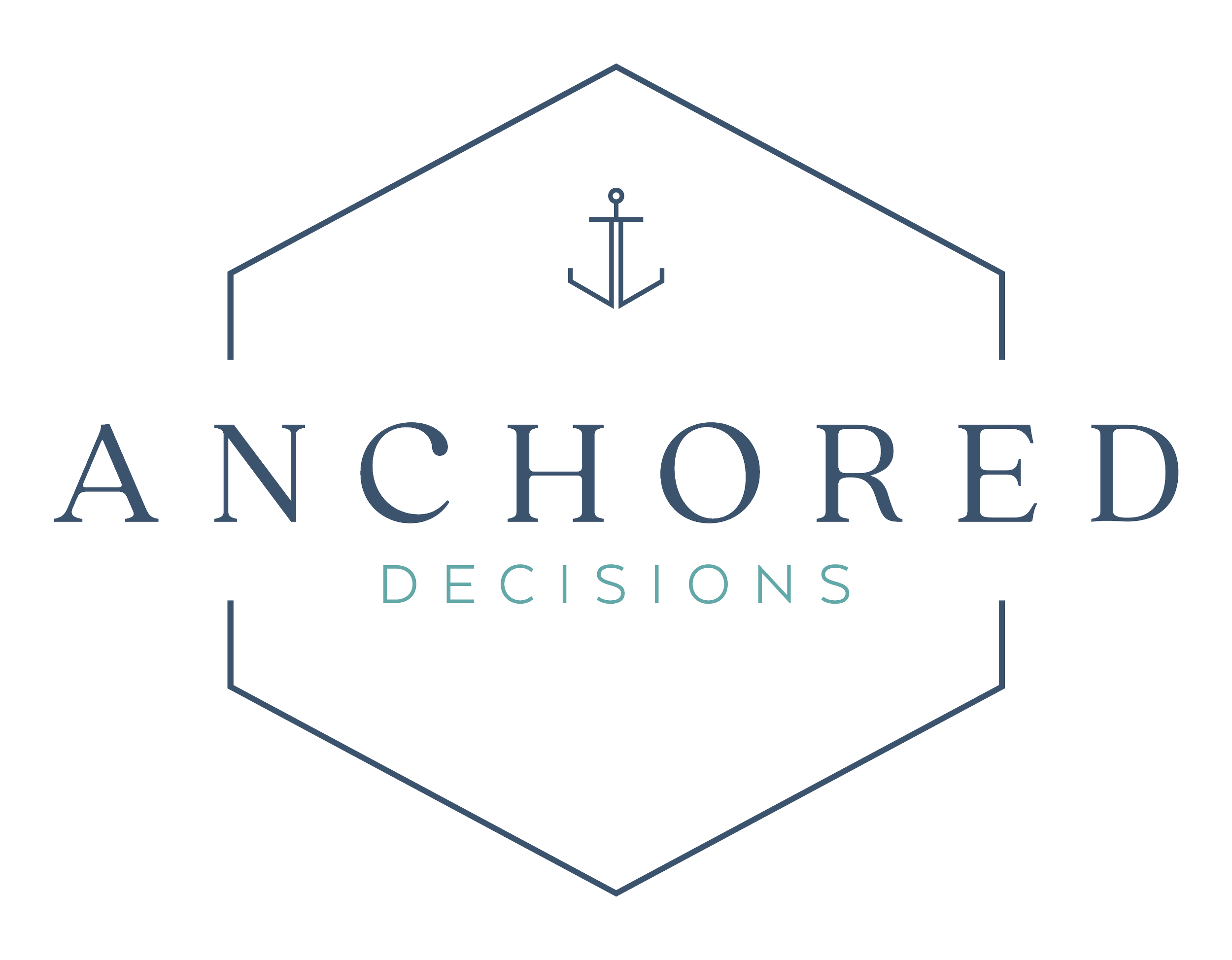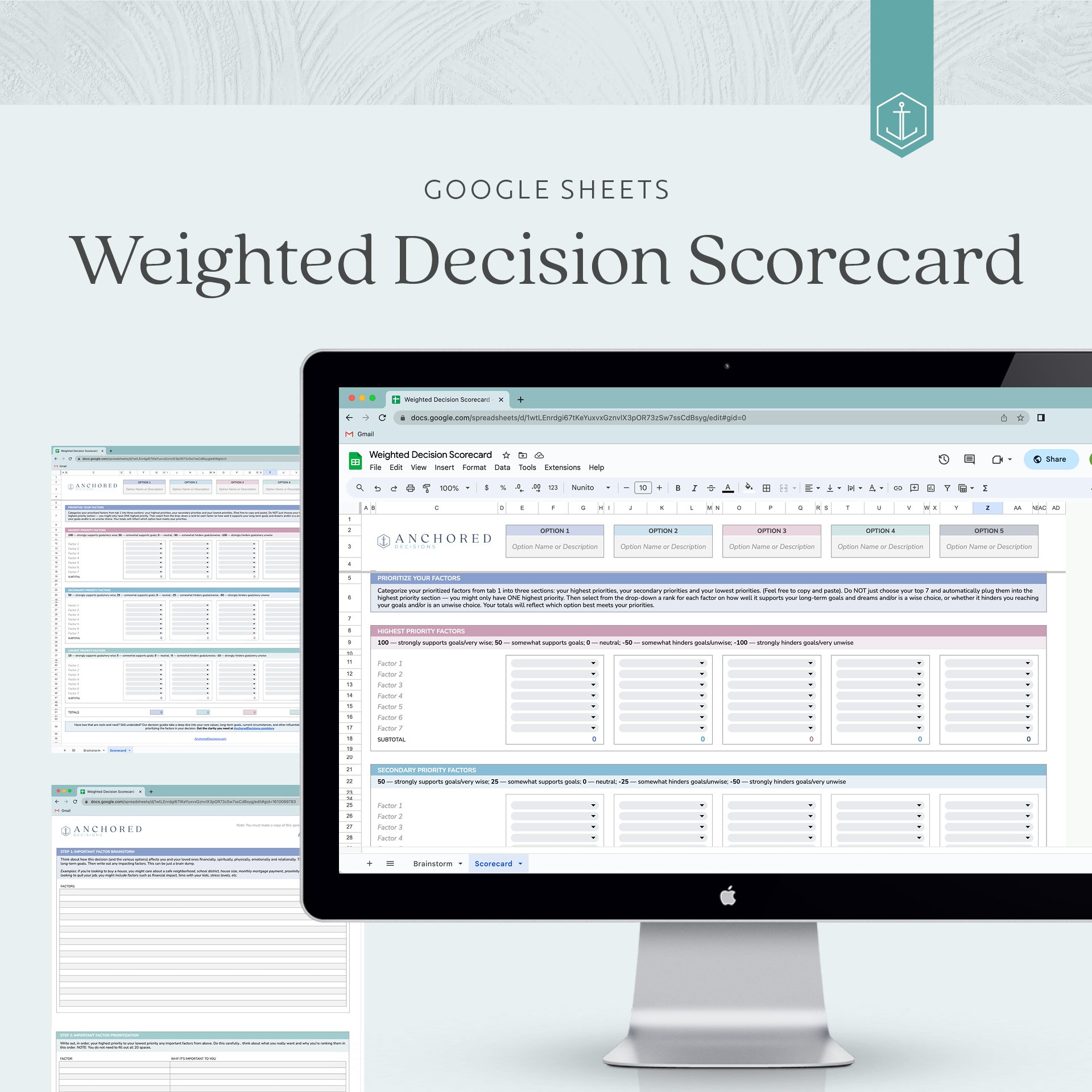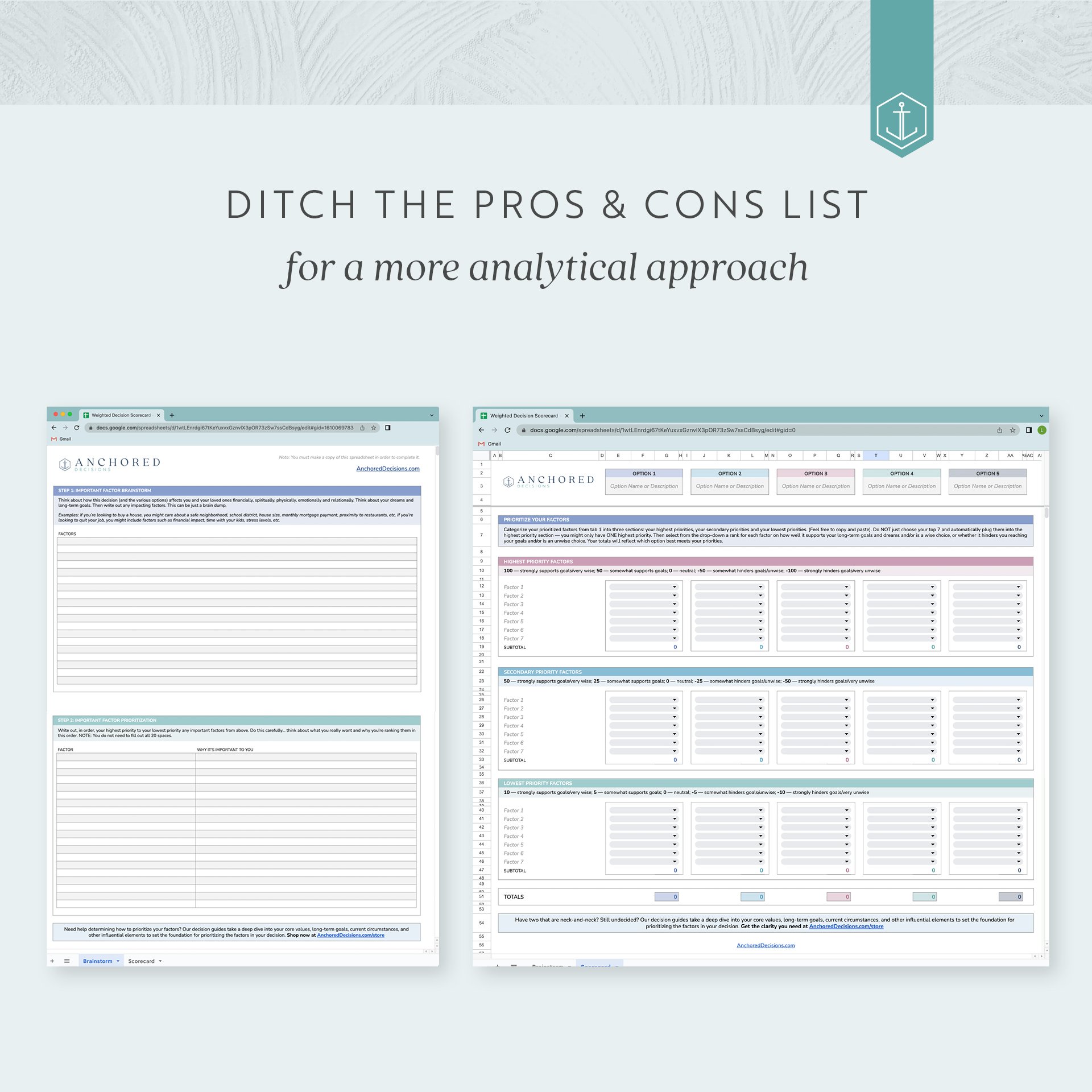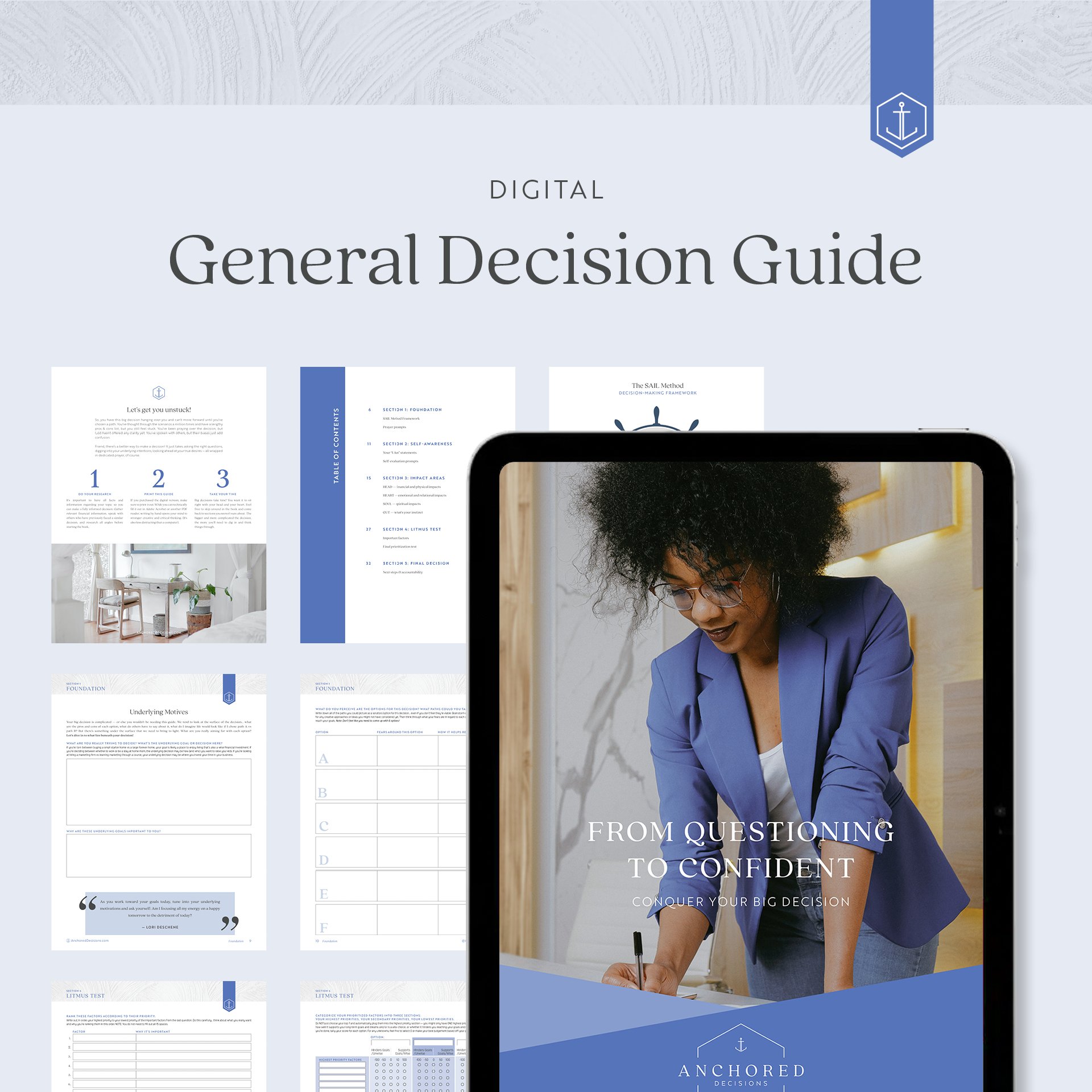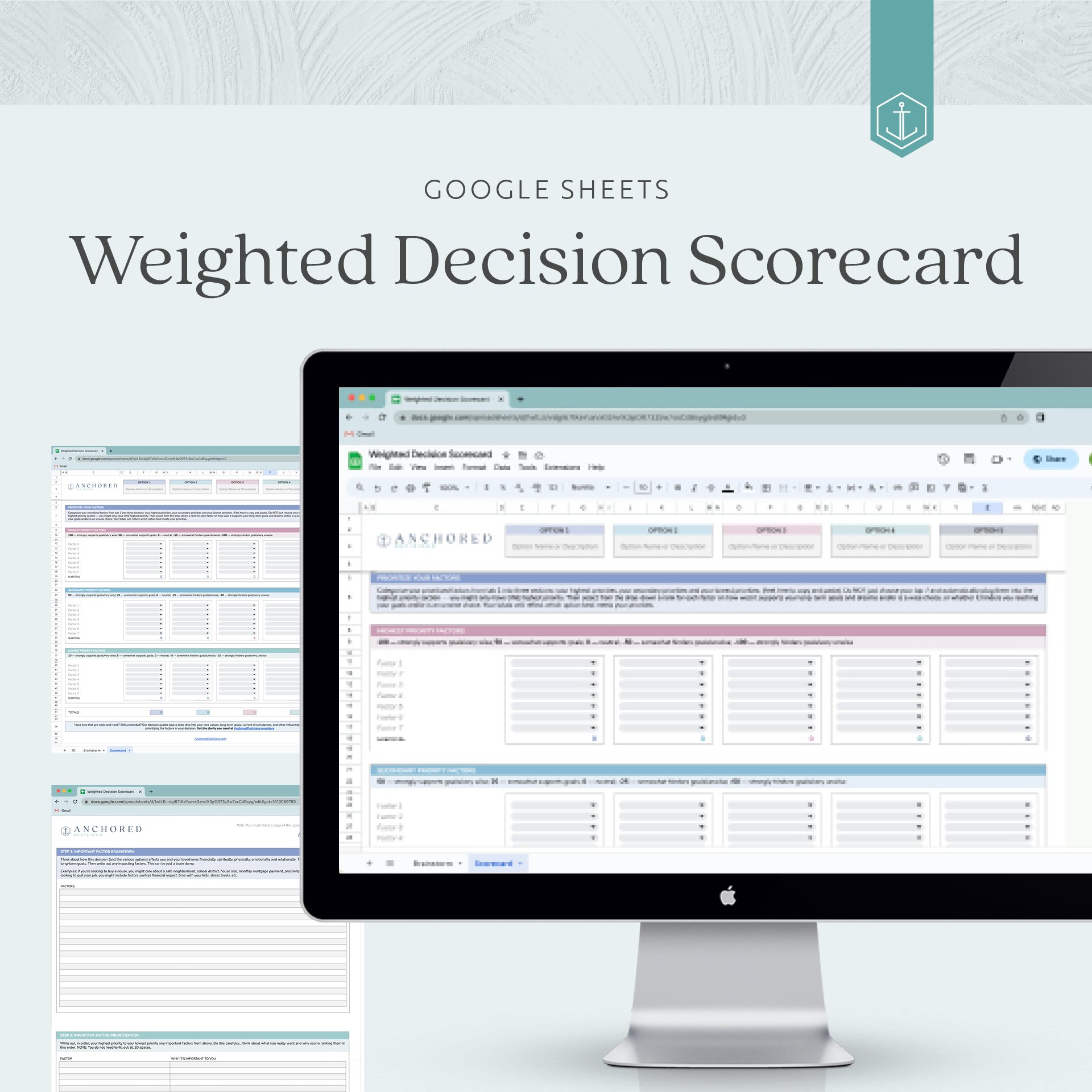Make Easier, More Confident Decisions with this Simple 3-Step Process for Decision-Making
It’s 3am but sleep escapes you. Your heart pounds out of your shirt, your throat tightens, the pit in your stomach provokes nausea. Am I making the right choice? You ponder.
Big decisions can eat away at you. Decisions like…
Which job offer to accept
Where you should live
Who to marry
What house to buy
Whether to start a business or side hustle
How many kids you should have
Whether to quit your job
Which car to buy
Where to send your child to school
Whew — what a list!
Decide too quick and you may have regrets. Take too long and you could lose out on opportunities. Change your mind and it’s a huge waste of time.
The importance of good decision-making skills
Most people recognize that decision-making is a major cause of stress and anxiety (hello, sleepless nights and a racing heart), but what you don’t realize is that decision-making is a skill. And the good news for you is, decision skills can be worked on and improved.
You just need the right tools and some practice.
How most people make big decisions
When facing big decisions, most people do one or more of the following:
Search the internet for articles or information related to this decision
Search Facebook groups to see how others have handled a similar decision
Turn to others for advice — family, friends, mentors
Compare the pros and cons
Follow their gut instinct
The problem with these is, they aren’t all-encompassing. No one knows your exact situation — your desires, your circumstances, your personality — except you, so talking with others may not consider the full picture.
Pros and cons lists are helpful to a degree, but they often compare apples to oranges, with some strong pros or cons for each side, which just makes the decision more confusing and stressful.
Following your gut could mean choosing short-term satisfaction over long-term goals and desires.
A comprehensive decision-making strategy
My decision-making framework takes a comprehensive approach to decision-making to be sure you feel confident in the choices you make. I want you to feel at peace with your decisions by covering all bases and considering your heart’s desires, while not neglecting the facts and data.
My framework is called the SAIL Method — Self-Awareness, Impact, Litmus Test — to help you sail through your decisions.
Let’s break it down:
1. Self-Awareness
The S and A stand for Self-Awareness. This is the foundation of your decision. You must know who you are, what you stand for, what your goals are, etc. If you’re making a decision for your business, you must know your brand's goals and values. Write them out and really consider how you want to be perceived and remembered. What are your long-term and short-term goals?
You might automatically eliminate certain options if you realize they don't align with your core values, beliefs or goals.
2. Impact
The I in SAIL stands for Impact. What areas of your life (or business) are impacted by this decision? I've identified five key areas of impact based on your heart, head and soul. How does this decision — and the outcomes of each option — affect you financially, physically, emotionally, relationally, and spiritually?
From the Head
Financially — know your numbers, calculate the short-term and long term gains and losses as well as any investments required.
Physically — think about your health and wellness, time, home, exercise, sleep, diet, etc. Do you have any physical limitations that might impact your decision, such as house/office space size, HOA regulations, city of residence, etc.? Do you have the time and energy to handle each option?
From the Heart
Emotionally — how do these options affect you mentally? How do you feel about each potential outcome? Will they support your mental health or will it be a struggle for you?
Relationally — consider what impacts this decision will have on your relationships with your significant other, parents, extended family, friendships, children, employees, etc. Who else is affected by this decision and what are their thoughts on it? Which relationships (or opinions) should you take into consideration with this decision?
From the Soul
Spiritually — how will the outcomes of your decision impact you spiritually? Think about what’s biblically aligned and glorifying to God. Will these options inspire growth and encourage your faith, or will they be a stumbling block to your relationship with God? Has God spoken to you in any way regarding this decision?
Seeing the impacts of this decision may make some options an easy “yes” or a hard “no.” Though if you’re still torn, at least you’ve identified some impacting factors which you’ll use in the next step of the framework.
3. Litmus Test
The last section is the L — your Litmus test. The litmus test evaluates your highest priorities in this decision to determine which choice best supports those priorities.
Think about your goals… what’s most important… the things you want most — preferably for the long-term, big-picture. The key here is to organize all of the important factors in order of priority. Then evaluate which of your options seem to meet these priorities. That’s what makes this step different from just a pros and cons list.
Determine if there are any deal-breakers for you and think through why those are deal-breakers. If everything came down to one factor, which is the most important to you?
My favorite way to perform the litmus test is to use our weighted decision scorecard. Here’s how the scorecard works, using an example of buying a house:
Brainstorm all the impacting factors for this decision.
Ex: proximity to work, in a good school district, updated fixtures and design, square footage, number of bedrooms/bathrooms, pool, kid-friendly neighborhood.
Decide which of those factors are the most important to you and rank them according to your top priority, secondary priority and least important.
Ex: Perhaps you care most about the neighborhood and location, second about the size and number of rooms, and last about the updates or pool.
Rank each of your options according to how well they help you reach your goals or meet your requirements for each factor… giving a higher numerical ranking to the items in your top priority list than your bottom. (I like to use a scale of -100, -50, 0, 50, 100 for the highest priority category, -50, -25, 0, 25, 50 for the middle, and -10, -5, 0, 5, 10 for the lowest… feel free to adjust according to what works for you).
Ex: Perhaps house A gets a 50 for the neighborhood, a 100 for the proximity to work, and a 100 for the school district; it gets a 25 for the house size and a -25 for the number of rooms; then it gets a 10 for having a pool and a -5 for being somewhat outdated.
Add up your totals to see which ranks the highest!
Ex: House A gets a score of 255. Perhaps house B scored 130 and house C scored 415. C is your best option as it meets your priorities the best.
The Final Step
Once you’ve made a decision, the final step is to document why you made that decision! Look through your decision scorecard and write down how the winning choice met your criteria the best. Writing down the reasons will help you stand firm in this decision and remember why you chose. When your heart starts tugging the other direction, fear kicks in or your friends & family question you… you need a solid answer to back your decision!
Let me know in the comments which step of the SAIL Method you think will be most helpful for your decisions!
Want to take the SAIL Method one step deeper, with all the right questions to help you make a confident decision? Check out our decision guides!
Or grab the weighted decision scorecard for a quick and easy analytical approach!
